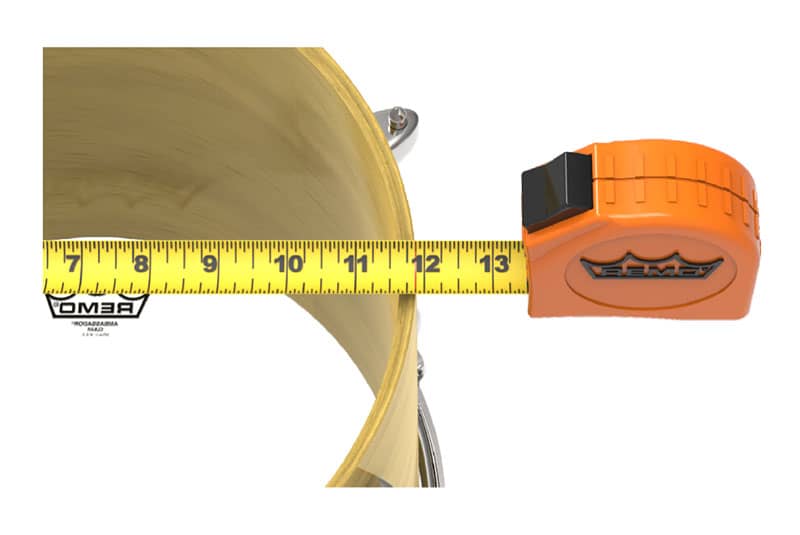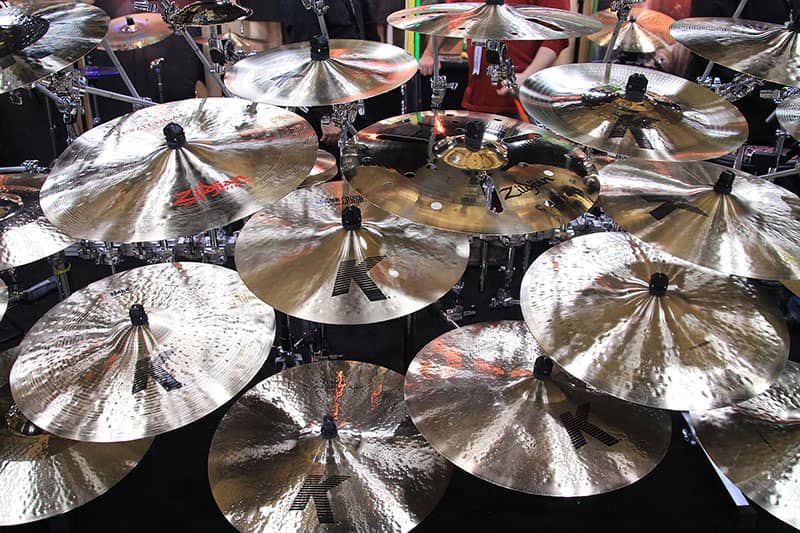Without Drum Heads
Exterior Shell Measurement
When measuring the size of your drums, it’s best to remove the top and bottom drumheads to allow the most accurate reading. You should also remove the hoops that hold the heads on the drum.
Once you’ve done that, you should take the measuring tape and line it across the surface of the drum. You’ll get the size of the drum by measuring one side to the other. This diameter reading will be the main size to work with, and it should be anywhere between 6” to 24”.
When it comes to measuring diameters, drum shells usually don’t have decimals to worry about. If the shell is half an inch more or less somewhere, you may be measuring wrong. The shell may also be a bit warped, causing it to stretch.
Both the top and bottom sides of the shell should measure the same length across. Also, ensure to measure from side to side with the most space between the edges.
Depth Measurement
It’s even more important that you remove the heads and hoops of drum shells when measuring their depth. You should do this as you’ll get the most accurate measurement when lining the measuring tape on the inside of the shell.
Take the tape, attach one side to the top of the shell at the bearing edge, and then pull it down to the bottom. This is how you’ll get your depth reading.
Unlike the top and bottom sides of a shell, depths will often have decimals in them. This is mostly true when it comes to snare drum sizes. Getting a snare drum that has a depth of 5.5” is fairly common.
When measuring the sizes of your drums, getting the depths of everything will be a long process, considering that there is a lot more variety in this measurement than there is with diameter readings.
Once you have the diameter and depth, you’ll know the exact size of your drum. Some people prefer putting the depth first in size descriptions. This means that it may say 8” x 14” instead of 14” x 8”. Both ways of stating size are correct, though.


